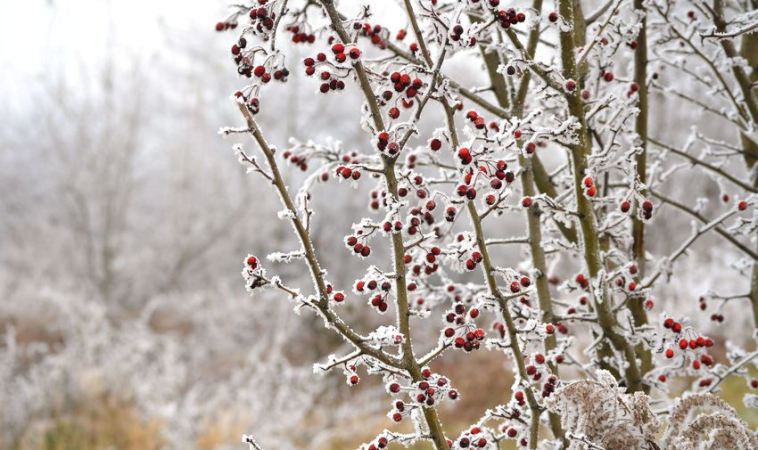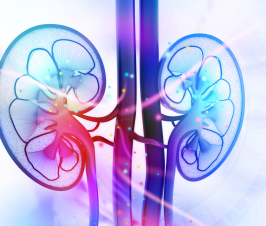Hypothermia is defined as a generalized lowering of body temperature while frostbite results from injury to the tissues due to exposure to cold. Susceptibility to cold injury increases in the elderly, infants, substance abusers, persons with exhaustion, hunger, dehydration, hypoxia, impaired cardiovascular function and those in prolonged contact with moisture or metal. Body temperatures of 34ºC or 93.2ºF or less are indicative of hypothermia. Hypothermia commonly occurs when the loss of body heat is greater than its production. It is most commonly seen during cold weather but can also occur due to prolonged immersion in water, exposure to cold wind, wet clothing, severe trauma or lying on a cold surface.
Because of the high surface area to body weight ratio that infants have, heat loss occurs more rapidly and is especially problematic in low birth weight infants. Newborns are susceptible to developing hypothermia in cool environments which can result in metabolic problems, hypoglycemia, and death.
Hypothermia leads to a decrease in all body functions such as cardiovascular, respiratory and kidney function, decreased metabolism, neuromuscular reaction time, and mental function also occur. If not corrected, the patient begins to become confused, disoriented, may hallucinate and gradually enter a coma. Even though the patient is not shivering they still may be hypothermic and that their core body temperature is dangerously low. Eventually death ensues, usually from heart failure.
In addition to homeopathic treatment, standard emergency medicine procedures such as gradual warming in the elderly or a rapid warming in younger patients with hypothermia and a more rapid warming with frostbitten patients should also be employed.
What to do Until the Doctor is Seen
- Obtain a temperature either orally, from the ear, or rectally. If the temperature does not rise above 93.2°F (34°C) then hypothermia is present.
- Immediately begin to warm the person either by removing wet clothing or wrapping them in blankets and moving them to a warm place.
- Take vital signs such as temperature, pulse, respirations and blood pressure if possible.
- Administer the appropriate homeopathic medicine while you are attempting to warm the patient.
- If the patient’s temperature is 93.2°F (34°C) or less, transport to the nearest emergency room is a must. For temperatures of 94.5°F (34.7°C) active external warming of the trunk rather than the extremities should be undertaken. Active warming should occur at 0.5° to 2.0° per hour.
- If the patient is elderly, a newborn, or a low birth weight infant, transport to the emergency room or to your physician’s office for evaluation.
- If frostbite is present, immerse the affected part in water that is not warmer than 105°F (40.5°C). This may be painful as the tissues begin to warm up and an analgesic may be needed.
Solutions
Homeopathic Medicinessuch as Agaricus, Arsenicum album, Aurum metallicum, Camphora, Carbo vegetabilis, Cuprum metallicum, Dulcamara, Hepar sulphuricum, Nux vomica, Rhus toxicodendron, Secale and Veratrum album are common remedies for hypothermia.
Hydrotherapy –Wrap up in wool blankets and move to a warm place. Apply hot packs to the abdomen and back but not the extremities, as this will warm their core. Warmed blood will soon flow to the extremities.
Diet & Nutrition –Administer hot and warming herbal teas such as ginger, with honey and lemon.
 Thomas A. Kruzel N.D.is a naturopathic physician in private practice at the Rockwood Natural Medicine Clinic in Scottsdale, Arizona. He received a BA in Biology from the California State University atNorthridge,and his Doctorate of Naturopathic Medicine degree from the National College of Naturopathic Medicine. Dr. Kruzel is also a board certified Medical Technologist. He completed 2 years of Family Practice Medicine residency at the Portland Naturopathic Clinic where he was chief resident prior to entering private practice. He also completed a fellowship in Geriatric Medicine through the Oregon Geriatric Education Center and the Portland VA Medical Center.
Thomas A. Kruzel N.D.is a naturopathic physician in private practice at the Rockwood Natural Medicine Clinic in Scottsdale, Arizona. He received a BA in Biology from the California State University atNorthridge,and his Doctorate of Naturopathic Medicine degree from the National College of Naturopathic Medicine. Dr. Kruzel is also a board certified Medical Technologist. He completed 2 years of Family Practice Medicine residency at the Portland Naturopathic Clinic where he was chief resident prior to entering private practice. He also completed a fellowship in Geriatric Medicine through the Oregon Geriatric Education Center and the Portland VA Medical Center.
He has been an Associate Professor of Medicine at National College of Naturopathic Medicine where he has taught Clinical Laboratory Medicine, Geriatric Medicine and Clinical Urology. He is the author of the Homeopathic Emergency Guide A Quick Reference Handbook to Effective Homeopathic Care published by North Atlantic Books and Haug PublishersGermany,and has published numerous articles in The Journal of Naturopathic Medicine as well as other publications. He also is the author of the Natural Medicine Pediatric Home Health Advisor. He has been a member of the Alternative Medicine Review Editorial Review Board since 1997 and editor of the Clinical Medicine section of the Foundations Medical Textbook. He is also the past president of the American Association of Naturopathic Physicians and was selected as Physician of the Year by the AANP in 2000 and Physician of the Year by the Arizona Naturopathic Medical Association in 2003.
This article is an excerpt from the Natural Medicine Pediatric Home Health Advisor.

















